

FLOWER HOUSE l GARDEN l LIFESTYLE














The finest in home textiles. Chicago-crafted since 1989.


































La Menagerie Collection
Photography by Nick Mele









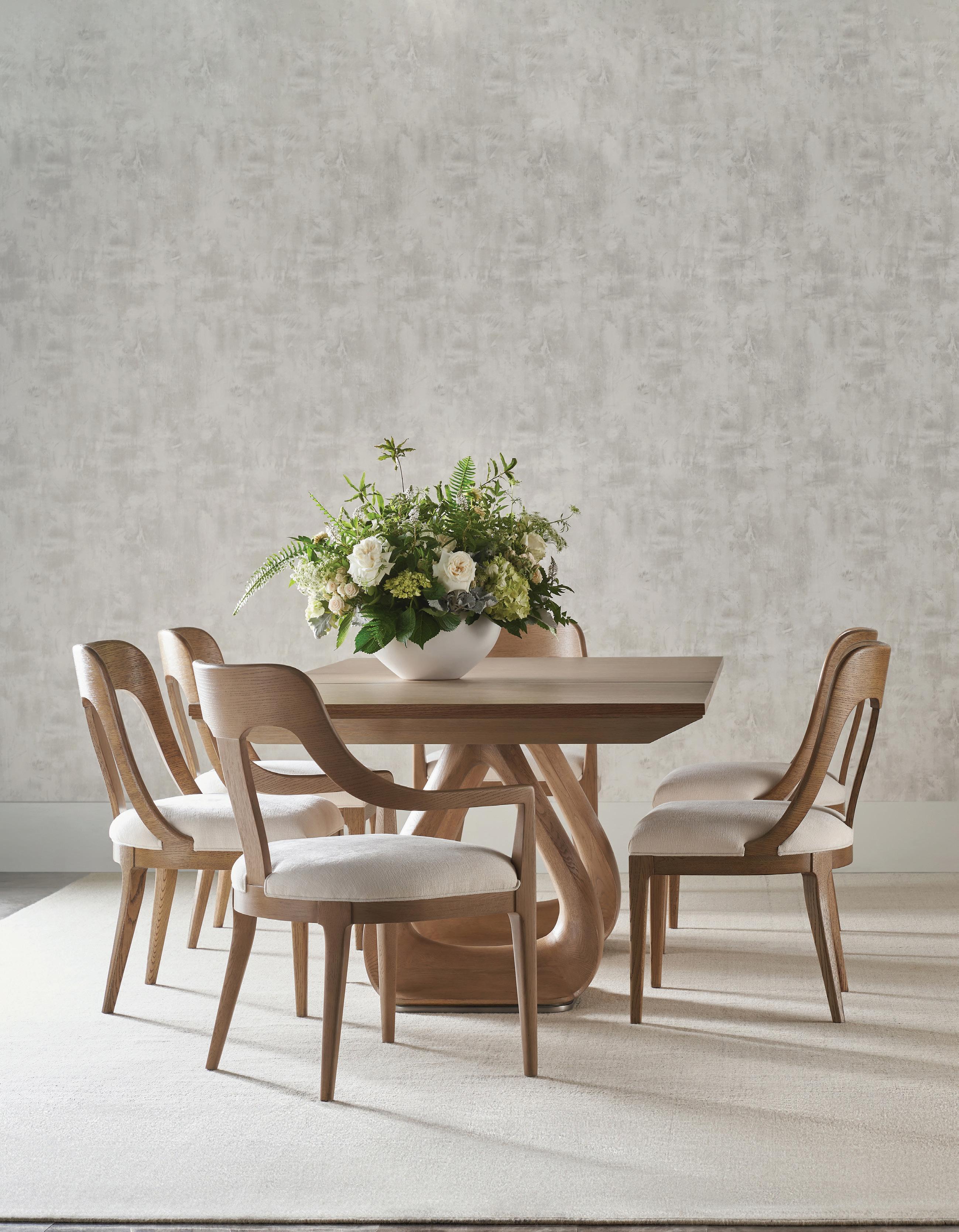

September • October 2024

60 A Walk on the Wild Side
A planned meadow in Dutchess County, New York, offers a different spin on spectacular from season to season.
66
Defining Beauty
With a third book from Mark D. Sikes out this fall, we thought it was the perfect time to check in with the Los Angeles-based interior designer to discuss all things beautiful.
74
Cultivating Grace
At Grace Rose Farm in Southern California, Gracie and Ryan Poulson combine their artistic passion for beauty with a strategist’s foresight to create a community that functions as both a business and an abiding source of joy.
80
Passion Project
On a mission to foster more environmentally-friendly practices in the floral industry, TJ McGrath gathers like-minded creatives for a symposium called the Sustainable Flowers Project.
ON THE COVER
Inside his cottage in Somerset, England, garden designer Sean A. Pritchard displays gifts from the garden year-round. For fall, homegrown dahlias take their turn. Photographed by Sean for his new book, Outside In: A Year of Growing and Displaying (Mitchell Beazley, 2024).
“Just living isn’t enough,” said the butterfly. “One must also have sunshine, freedom, and a little flower.” —HANS CHRISTIAN ANDERSEN





19
From the Field
Brilliant seasonal flowers, an autumn table filled with abundant color, the best in fall style, and a bumper crop of tables and chairs from High Point Furniture Market
30
Arranging
In his first book, Outside In: A Year of Growing and Displaying, British garden designer Sean A. Pritchard shares his advice on growing, harvesting, and arranging flowers year-round. Here, we feature an excerpt focused on fall.
38
Entertaining
With crisp days and cool nights ahead, we ask New York-based event designer Augusta Cole how she approaches setting a fall tablescape.
42
Interiors
Designer Mary Beth Wagner sheds light on a Tudor Revival-style house in the Highland Park neighborhood of Dallas.
52
Women in the Garden
Gloria Vanderbilt displayed her love of botanicals not only in the patterns and prints of her fashion line but also in the surroundings of her personal life.
IN EVERY ISSUE
Watering Can 14 What’s Online? 58 Sources 86 Floral Moment 92


PHOTOS









Featuring: MH30570 Gregory Nightstand and H458C Tufty Chair
WATERING CAN A Note from the Editor
“Let us crown ourselves with roses, before they be withered: let no meadow escape our riot. Let none of us go without his part in luxury: let us everywhere leave tokens of joy: for this is our portion, and this our lot.” —BOOK OF WISDOM
THE ABOVE QUOTE was the inspiration for Robert Herrick’s famous line “Gather ye rosebuds while ye may” from his poem “To the Virgins, to Make Much of Time.” Having departed from my usual format to dedicate last issue’s “Watering Can” to my husband in the garden, I shall continue in that vein with the same protagonist in a different setting.
This 4th of July while in Fairhope, Alabama, my dearly beloved Gates suffered a life-threatening heart event. We were on pins and needles and prayers for around 18 hours. He has come through the fire like gold and is now stamping his hoof to get back in the garden. Ironically, all of his hard work in the garden probably saved him. The doctors and nurses ran a stream of amazed commentary about his being in such good shape, asking “How does he do it?” It’s most likely the reason he’s alive and improving. Another reason to go dig in the dirt, everyone.
Meanwhile, texts, emails, notes, books, flowers, and food— essentially, love—continue to pour into our lives, including personal reflections of the ways Gates has touched different people’s lives and many sentiments brimming with hope for the future.

There’s nothing deep or philosophical I can impart that hasn’t been said through the centuries, but having this space, I must add my voice to the chorus. Life is short and fragile and beautiful and scary and awful and wonderful and full of pain and full of pleasure and, and, and… As I look at the messages from FOGs (Friends of Gates) and ponder the life he’s led and continues to lead, I see that he truly does leave tokens of joy everywhere— and I am inspired to aim to do the same. I’m also inspired to encourage us all to do the same. And if we can do it with roses, so much the better.

Love and SDG, Margot Shaw EDITOR-IN-CHIEF
Please send your comments, triumphs, challenges & questions to: wateringcan@flowermag.com OR Letters to the Editor I FLOWER Magazine I P.O. Box 530645 I Birmingham, AL 35253 Get the FLOWER email newsletter! Sign up at flowermag.com/news

BY
PHOTO
CARY NORTON

Our debut collection of custom, cut-to-order area rugs is here.
thibautdesign.com
Laguna Rug in Ocean





VOLUME 18, ISSUE 5
MARGOT SHAW FOUNDER/EDITOR-IN-CHIEF
Karen Carroll EDITORIAL DIRECTOR
Julie Gillis MANAGING EDITOR
Nicole Gerrity Haas ART DIRECTOR
Amanda Smith Fowler STYLE DIRECTOR
Casey Epps EXECUTIVE ASSISTANT
DIGITAL
Jason Burnett DIGITAL GENERAL MANAGER
Carrie Clay ASSOCIATE EDITOR
CONTRIBUTING EDITORS
Alice Welsh Doyle
James Farmer
Marion La ey Fox
Elaine Gri n Tara Guérard
Frances MacDougall
Tovah Martin
Cathy Still McGowin
Charlotte Moss
Matthew Robbins
Margaret Zainey Roux
Frances Schultz
Sybil Sylvester
For editorial inquiries: editorial@flowermag.com
Jennel O’Brien PUBLISHER
Suzanne Cooper NATIONAL DIRECTOR, HOME FURNISHINGS
Julie Durkee NATIONAL DIRECTOR, LUXURY
Kate Chapman NORTHEAST ACCOUNT DIRECTOR
Steven M. Fisher MIDWEST/SOUTHWEST ACCOUNT DIRECTOR
Wendy Ellis REGIONAL ACCOUNT MANAGER
Sara D. Taylor REGIONAL ACCOUNT MANAGER
Marlee Ledbetter Mims INTEGRATED MARKETING MANAGER
For sales inquiries: sales@flowermag.com
BUSINESS OFFICE
Mercy Lloyd CHIEF OPERATING OFFICER
Nicole Bowman CIRCULATION MANAGER
Patrick Toomey ACCOUNTANT
CUSTOMER SERVICE
For change of address and subscription inquiries: 877.400.3074 or CustomerService@FlowerMag.info
ADVISORY BOARD
Paula Crockard
Winn Crockard
Gavin Duke
Gay Estes
Katie Baker Lasker
Mary Evelyn McKee
Michael Mundy
Ben Page
Angèle Parlange
Renny Reynolds
Scott Shepherd
Mish Tworkowski
Remco van Vliet
Evie Vare
Louise Wrinkle









Brilliant seasonal flowers, an autumn table fi lled with abundant color, the best in fall style, and a bumper crop of tables and chairs from High Point Furniture Market
PRODUCED BY AMANDA SMITH FOWLER
PHOTOGRAPHY BY DAVID HILLEGAS

“The first hint of fall gives me reason enough to celebrate! Although it’s not yet cashmere weather at my home in Savannah, any cocktail starring bourbon makes a cozy liquid sweater. And it’s cool and dark enough to serve a sinful gratin among masses of candles.”
—REBECCA GARDNER OF HOUSES & PARTIES


PREVIOUS PAGE: Floral Design: Leska Graves Taylor • Fabric: Square Off in Multi (to the trade) by No.9 Thompson • Container: Grisha Centerpiece ($780) from Arteriors • THIS PAGE, CLOCKWISE FROM TOP CENTER: Floral Design: Leska Graves Taylor • Festival Dinner Napkins in Lemon ($69/set of 4) by Sferra • Majestic Boxwood Flatware ($712/5-piece place setting) from Houses & Parties • Warm Smoke Venetian Tumbler ($124) from Houses & Parties • Palladio Gold Service Plate ($140) by Vietri from Replacements, Ltd. • Izmir Pimento Dinner Plate ($130) from Houses & Parties • Vintage Japanese Hand-painted Plates ($520/set of 7) from Houses & Parties • Fabric: Square Off in Multi (to the trade) by No.9 Thompson



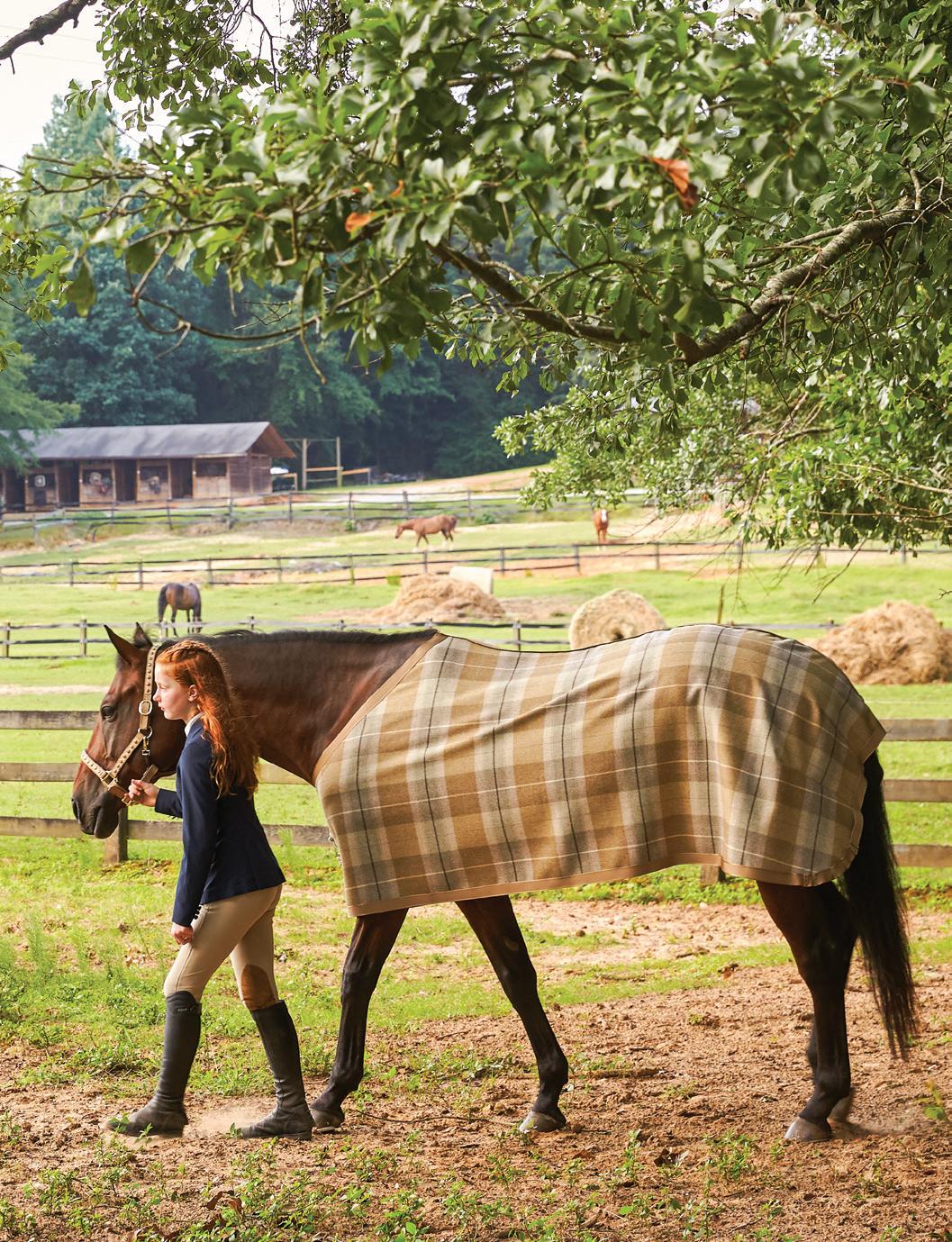

TOP LEFT: Fabric: Square Off in Multi (to the trade) by No.9 Thompson • Rainbow Enameled Silver Tumblers ($1,498/set of 6) from Houses & Parties • Drinks Box in Orchard Orange ($219) by Fieldbar • Floral Design: Leska Graves Taylor TOP RIGHT: Fabric on horse’s blanket: Buxley in Lichen (to the trade) by Stroheim • 1.5-inch Francoise Border in Latte on horse’s blanket (to the trade) by Samuel & Sons BOTTOM LEFT: Noma Studded Gimp on horse’s halter (to the trade) by Samuel & Sons • 1.25-inch Francoise Border on bottom of horse’s halter in Latte (to the trade) by Samuel & Sons


































At Home in France by Timothy Corrigan, rizzoliusa.com • Island Dreaming by Amanda Lindroth, vendomepress.com • Artful Home by Josh Young, rizzoliusa.com • Interiors Styled by Mieke ten Have, vendomepress.com • Seeking Beauty by Veere Greeney, vendomepress.com • Cullman & Kravis by Elissa Cullman, rizzoliusa.com • Southern Interiors by Tori Mellot, phaidon.com • Forever Beautiful by Mark D. Sikes, rizzoliusa.com • Fabric: Braemar in Teal (to the trade) by Lee Jofa, kravet.com • Antique Brass Spanish Stirrups: stylist’s own. Similar finds at chairish.com • Floral Design: Leska Graves Taylor






















I find the best interiors incorporate influences from around the world, from the Far East to the West, for an interesting, thoughtful mix. I love an Asian silhouette— especially on a drinks table—to punctuate a room.


—DESIGNER MARY MCDONALD





Alma Side Table (inquire for pricing) by Maitland-Smith, maitland-smith.com
Vintage Tiered Side Table ($1,249) by Woodbridge Furniture, woodbridgefurniture.com
Dalkeith Martini Table ($3,194) by Jonathan Charles, jonathancharles.com
Maggie Drink Table ($625) by Varnish Collection, varnishcollection.com
Andrews Chairside Table ($1,797) from Century Furniture, centuryfurniture.com
Miss Chow Side Table (inquire for pricing) by Mary McDonald from Chaddock, chaddock.com

When it comes to chairs, I often feel like Goldilocks. Is it too deep, too high, too hard, too small? If it isn’t comfortable, no one will sit there. When the lines are beautiful, and the scale suits the person and the room, the chair is just right. —DESIGNER







Leighton Chair (inquire for pricing) by Bunny Williams for Wesley Hall, wesleyhall.com
Dressmaker Sophie Dining Chair in Italian Blend Lemongrass ($1,250) by Coley Home, coleyhome.com
Iris Chair (inquire for pricing) by Gabby, gabby.com
Phoebe Dining Chair (inquire for pricing) from Hickory Chair, hickorychair.com
1545-01 Chair in Founder Hemlock (inquire for pricing) by Lee Industries, leeindustries.com
Griffith Park Archie Chair (inquire for pricing) from Universal Furniture, universalfurniture.com
BUNNY WILLIAMS

Full Circle
In his first book, Outside In: A Year of Growing and Displaying, British garden designer Sean A. Pritchard shares his advice on growing, harvesting, and arranging flowers year-round. Here, we feature an excerpt focused on fall.
WRITTEN AND PHOTOGRAPHED BY SEAN A. PRITCHARD

AS I RETREAT INDOORS after a summer spent outside, I want the plant and flower displays across the cottage to be welcoming and familiar. I want them to gently ease me back into darker nights and slower starts by somehow responding to the changing landscape outdoors. The abundance of summer has faded, and the heady days of rooms filled to the brim with flowers have passed. In their place, a single jug of dahlias or a solitary pot of cosmos is enough to lightly transition to this more sober of periods.
I suppose I start a yearly cycle of fully appreciating the beauty of plants and flowers in the autumn. The disappearance of everything that has sustained me over spring and summer comes with a jolt, but one that always reminds me of why I love the garden and the things I grow in it so much. I begin to once again look carefully at the flowers that are still around and take in their intricacies in a way that feels unnecessary, or somehow less important, during the height of summer. And so, at this time more than any other, I want the plant and flower displays in my cottage to be exhibits that can be closely studied and scrutinized.
I enjoy the finality that the end of autumn brings to the garden. It’s a satisfied feeling of closure mixed with a proud sense of achievement at everything that was grown and nurtured. But, while

there’s undoubtedly a short period of rest, in reality, closing the door on the garden outside merely opens another one to a season of gardening inside.
A kind of anti-hibernation where, although confined to the house, the endless pursuit of displaying plants and flowers very much continues.

As the temperature cools and the threat of frost looms closer, the garden undergoes a beautiful paint job: deep reds, silky browns, and the richest orange-rust are autumn’s gift. ABOVE: Rudbeckia hirta 'Autumn Colours'

“Dahlias are the cabaret act in the autumn garden.” —SEAN A. PRITCHARD

In autumn, there’s a special feeling to be had when you come home to a house filled with dahlias. With summer behind you, there’s an impending sense of the garden coming to an end, so displays of dahlias everywhere almost feels as if you’re cheating the inevitable.





Inside, cut cosmos is always a cheery sight. I cut as much of the stem with the flower as possible to achieve tall displays that flop over and land in informal positions.




Find inspiration for designing your garden and enjoying the fruits of your labor in Sean A. Pritchard's debut book, Outside In: A Year of Growing and Displaying (Mitchell Beazley, 2024).
Plants and flowers have the power to elevate any area of the house. On the kitchen dresser: heleniums, rudbeckia, dahlias, and zinnias in an old jug capture the chaos and spontaneity of the garden.







Autumn Alfresco
With crisp days and cool nights ahead, we ask New York-based event designer Augusta Cole how she approaches setting a fall tablescape.
BY MARGARET ZAINEY ROUX | PHOTOGRAPHY BY VICKI GRAFTON

An autumnal table captures the beauty of its surroundings at Glenstone Gardens in the Virginia Hunt Country. Floral designer Shawn Cossette of Be Just in Charlottesville created a "runner" from a seasonal bounty of persimmons, pears, mushrooms, foraged foliage, and flowers including marigolds, scabiosas, spent zinnias, dahlias, and garden roses.







































FLOWER: Tell us about your entertaining style. Augusta Cole: It is definitely rooted in an appreciation for interior design, antiques, and tradition—all things that I learned about early on from my mother and grandmother. I believe the greatest gatherings marry an elegant setting with fresh design touches, an abundant menu, and great music. I aim to treat my guests to a total sensory experience!
How do you like to entertain, specifically in the fall? When the days become shorter and the temperature drops, I embrace the opportunity to entertain outdoors. The glow of the autumn light and the feel of the fresh air allow me to create an ambiance that is warm and cozy.
Share how you make it feel warm and cozy—without all the seasonal fall kitsch, of course!
I try to convey fall through color and texture. An earthy palette of golden yellows and chocolate browns with pops of coral, burnt orange, burgundy, and apricot feels rich, as do textures with weight like wool, suede, and tweed. When setting a fall table, I like to incorporate chargers, tumblers, vessels, and serveware made from natural materials such as clay and wood to add even

Laboratorio Paravicini’s “Daisy” plates bring a sense of whimsy to the sophisticated table. The green charger from Be Just serves as a bu er between the plate’s design and the hand-printed floral motif on the custom Décors Barbares tablecloth.
more depth and dimension. Layering them with fresh flowers, foliage, and seasonal fruit, including pears, pomegranates, persimmons, and crabapples, expresses the spirit of abundance that is synonymous with the season. For me, the tablescape is perhaps the most important component of the event’s décor. When you set a table that is visually captivating and physically comfortable, your guests will want to linger around it longer.

Walk us through your process for creating a tablescape. I always start with a “star” element, like a patterned tablecloth or set of plates, to help establish the color story and guide the rest of my selections, including the napkins, glassware, vases, and candles. From there, I let the pieces fall into place. There is really no formula per se, but balance and restraint are key. You don’t want the eye to focus on one thing in particular—you want it to dance around the table and admire the moments that are independently beautiful and simultaneously cohesive. I love setting a table using a mix of elements from the various collections I have acquired over the years.
Tell us about your collections. Where do you source them and what do you look for?
I do a lot of shopping when I travel. The pieces I pick up at shops, galleries, and markets are special reminders of the places I’ve been and the people I’ve met, and they always make a fun topic for dinner table conversation. Two of my newest collections include custom Murano glassware brought back from a recent trip to Venice. One set is bubbled with loose, colorful murrini in a pinched style, and the other has a more traditional swirl. Aside from one-of-a-kind pieces, I’m drawn to antique and vintage finds, as well as those that feel good in the hand. Oversized, medium-weight linen napkins with tonal embroidery and etched crystal stemware are classic options, while flatware and serveware with mother-of-pearl or marble handles are fun and unexpected.
You truly have mastered the mix! Can you share a few tips? First and foremost, have fun! The table is meant to engage and inspire, so don’t hesitate to play around with elements of di erent patterns and provenances. At my table, you’ll often find heirloom silver flatware flanking whimsical ceramic plates from Italy and Morocco or a basketweave charger beneath my fine china. When layering, prioritize pieces with meaning rather than those that match. A tablescape built from cherished elements shines brighter than one that adheres to a prescribed aesthetic.
Augusta Cole













INTERIORS
Bright and Beautiful
Designer Mary Beth Wagner sheds light on a Tudor Revival-style house in the Highland Park neighborhood of Dallas.
BY CATHY STILL MCGOWIN | PHOTOGRAPHY BY NATHAN SCHRODER
STYLING BY MELANIE MCKINLEY

When change happens, it can be comforting to hold on to familiarity. Such was the case for Tavenner and Sean Roberts. After an unexpected career offer, the couple relocated their family to Dallas, leaving behind friends and their century-old Colonial in the coastal town of Rye, New York. Starting fresh, the Roberts sought a place that would embody their sentiments of home—something with old-house appeal in a pedestrian-friendly neighborhood. A Tudor Revival-style home, built in the mid 1990s and located in Highland Park, caught their eye. “Even though it wasn’t that old, it had the character of a historic house, and we loved the similar feel of the community,” Tavenner says. “Everything is connected by sidewalks. You could walk for miles.”
While the Roberts were quick to appreciate the location of the house and its authentic style, including the intricate moldings, vaulted ceilings, and wood-paneled rooms, they did have a few changes in mind to help them truly feel at home. They wanted to lighten up the traditional, dark, Tudor-style interiors, and they desired a designer who would not only honor the architecture but also highlight its fine points in a fresh new way.
The couple turned to interior designer Mary Beth Wagner to

ABOVE: The Tudor Revival-style house, designed by architect Richard Drummond Davis and custom built in the mid 1990s, belies its age thanks to the period-appropriate materials and architectural details.

Mary Beth Wagner

INTERIORS
“You have to be careful to not to overdo when it comes to layering color, texture, and pattern. Give it just enough so it remains special. Some things need to stay a little simpler.”
—MARY BETH WAGNER

ABOVE, LEFT TO RIGHT: As regular entertainers, the Roberts appreciated the home’s airy flow and wide foyer. Mary Beth introduced a highly polished custom maple credenza and edgy gold mirror as a pleasing contrast to the traditional architectural finishes. Original moldings define adjacent spaces, including Sean’s study.
tackle these requests and lift the mood. Known for her deft use of color and pattern, as well as her ability to find just the right tension between formal and relaxed, Mary Beth capitalized on the details, redressing them in lighter finishes and infusing the spaces with soft shades of blue and green along with coral accents. “We didn’t need to add any frills,” she says. “Thanks to the architecture, there were plenty of details already there.”
To achieve the brighter finish, Mary Beth worked with her team to strip back dark paneling, bleaching the wood or applying a clear coat to show the natural finish in some places while painting trim and molding in others. “Our overall goal was to give the house a little edge but not so much that it conflicted with the architecture,” she says.
Starting in the foyer, the designer grounded the lofty space with a sleek, custom maple console that features leather shagreen

insets and brass detailing. Above, a gold jagged-edged mirror reinforces the home’s balance of traditional and modern. Continuing the accord, she chose a mix of streamlined antiques and new furnishings, underscoring their accessibility with soft fabrics that signal a warm invitation.
Mary Beth overhauled the kitchen by removing a brick wall surrounding the range and replacing it with a custom steel-andpolished nickel hood set against pale blue tile. Ornate cabinet fronts were swapped out with shaker-style doors for a crisper look. And while she gave brighter touches to much of the house, she chose to keep Sean’s study dark as a nod to the original design.
Throughout the project, Mary Beth paid close attention to how the family would use each space daily, as well as when hosting guests. “There is no separate family room, so the living room had to serve a variety of purposes,” she says. For the space


INTERIORS

Mary Beth designed the grass cloth-covered cabinet as a foil to the breakfast room’s wooden furnishings. A bouquet of creamy yellow butterfly ranunculus winks to the Hunt Slonem butterfly painting.


ABOVE: Coastal notes in the living room’s artwork helped guide the color scheme of the house. Drapery in a Zak + Fox Khotan fabric is trimmed in blue tape to underscore the paintings’ vibrant hues. RIGHT: House of Harris Flora wallpaper comes across as a hand-painted mural in the powder bath.
to meet multiple needs, the designer divided it in half with a double-sided sofa and then delineated the two areas further by hanging a chandelier over each one. Despite the division, cohesiveness is gained through color scheme, coordinating fabrics, a single rug, and the bleached paneled walls.
The dining room suits both casual and formal affairs thanks to carefully selected antiques and a pastel color scheme. Venetian plaster walls painted pale green, along with the pool-blue lacquered ceiling, create the ambiance of alfresco dining indoors. Sculpted flowers on the ceramic lamps and the floral Penny Morrison fabric on the window treatments add garden whimsy.
Carrying the fanciful sentiment into the breakfast room, Mary Beth used one of client Hunt Slonem’s works as a focal point—a canvas of butterflies that seem to alight from the wall. To ground the space, she opted for an X-base table from Formations with a light wood top. A Biedermeier chest serves as a pedestal for a blue, glazed Paul Schneider lamp, one of a pair commissioned for the room. And beadboard ceilings painted in a barely-there blue match the sea mist hue of the Madeaux drapery fabric. With its architectural integrity, as well as all the intimations of blues and greens, the home looks as if it could easily be situated in the Roberts’s former town in New York. It’s those familiar details that made the family’s life transition as easy as a walk in one of the nearby parks.



INTERIORS
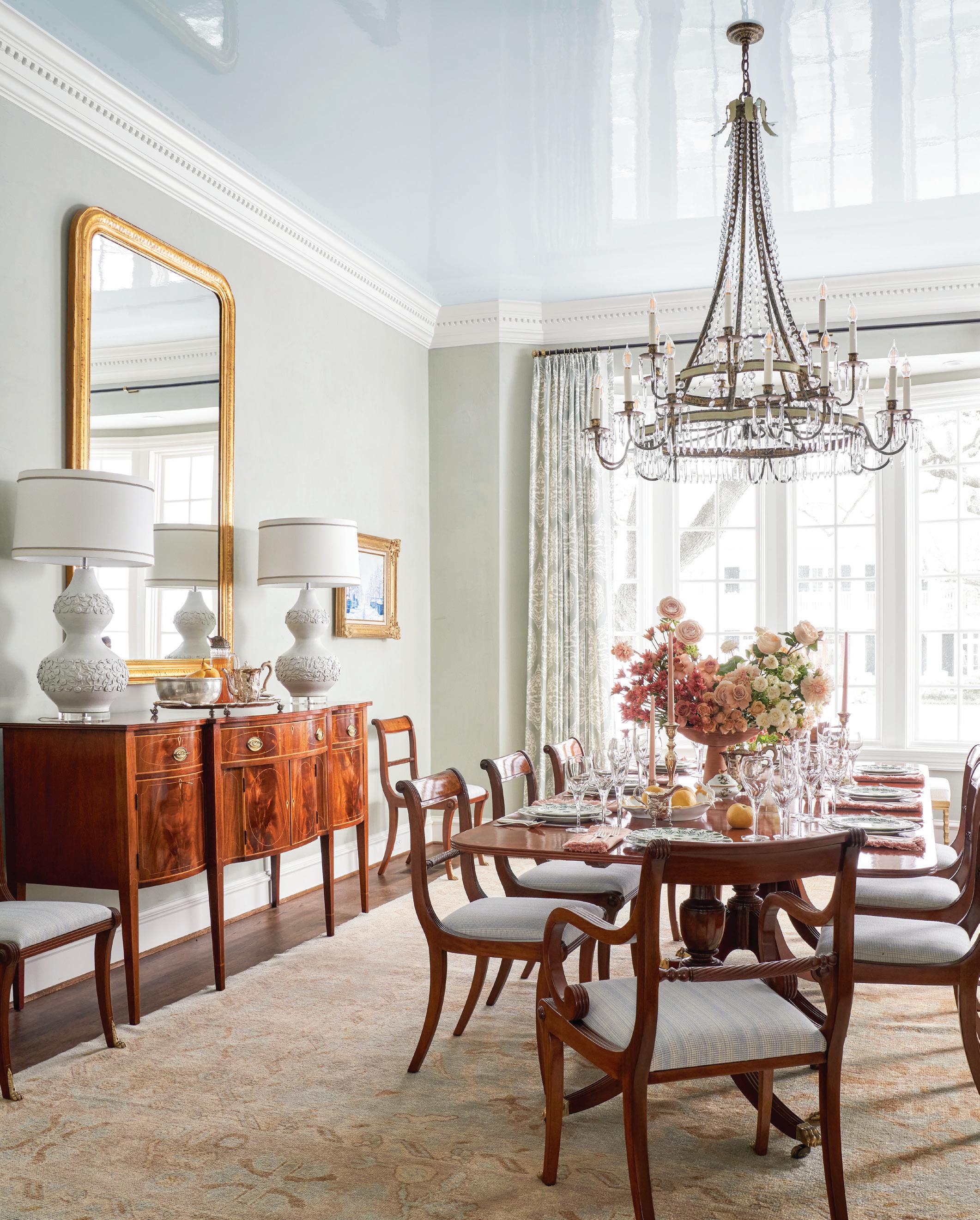
Garden roses, ranunculus, and a mix of mauve flowers form the centerpiece that anchors the Duncan Phyfe-style table and chairs. Mary Beth chose the crystal chandelier, a new fixture from latesta Studio, for its nod to convention while offering an updated look.
Light and Lively
English Tudors are replete with architectural details that fill a home with richness and character. While the style is traditionally dark, there are ways to brighten it up while still maintaining the integrity of the house. Here are a few tips that designer Mary Beth Wagner used in this interior.
Strip back heavy fi nishes.
Bleaching wood back to its natural state or refinishing it in a semitransparent glaze will shed light on the intricate dimensions of wainscoting, paneling, and trim while also letting the wood grain show through.
Mix it up.
Grass cloth walls add texture while toning down weighty wood paneling. “I also used white and pastel paint colors to bring soft notes to rooms and to the beadboard ceiling in the kitchen and breakfast room.” Mary Beth says.
Complement and contrast.
Incorporate furniture pieces with clean lines and brighter finishes. “I chose mostly solids in blues and neutrals,” says Mary Beth. “I also added rugs and fabrics that are equally light with floral designs and neutral backdrops.”
Add shine.
Metallic accents, including mirrors, fixtures, and carefully selected lighting, ensure that no room is too dark or oppressive, no matter how much paneling it has. Certain finishes, such as the lacquered ceiling in the dining room, also impart a reflective quality.
Choose modern art.
“I avoided ornate gold or thick wood frames,” says Mary Beth. “Most of the pieces in the owner’s art collection are edged with simple, white frames.”


Gloria’s World
Gloria Vanderbilt displayed her love of botanicals not only in the patterns and prints of her fashion line but also in the surroundings of her personal life.
BY CHARLOTTE MOSS


by her work. Vanderbilt's husband, Wyatt Cooper, once said of his wife, “She is as crisp as gingham, as sensuous as satin, and as inscrutable as velvet.”
Fashion designer Gloria Vanderbilt often incorporated flowers in her artistic creations. The blooms didn’t necessarily appear in botanically correct ways but rather in fabric designs and paintings that brightened her surroundings. Ever the romantic, Vanderbilt used flowers to highlight aspects of a room, to reinforce certain colors or textures, and, if she happened to be photographed in that room, to subtly coordinate with what she was wearing. Several photographs by Horst P. Horst, one of the most influential fashion photographers of the mid-20th century, illustrate Vanderbilt’s ability to connect herself with botanicals. In one image, she plays up pink in a silk shawl with pink flowers nearby—all accenting the same hues in the floral fabric covering the sofa. In another photo with her two sons, Anderson and
Carter, the designer poses on her bed where burgundy and white tulips mirror the burgundy of the boys’ silk pajamas, the white of her dressing gown, and the colors in the wallpaper.
In Vanderbilt’s world, it was as if everything could be knitted together as a whole, perhaps particularly poignant given her difficult childhood. Her early years were centered around a custody battle over her that was waged between her mother, Gloria Morgan Vanderbilt, and her aunt, sculptor and philanthropist Gertrude Vanderbilt Whitney. “The trial of the century,” as it was considered at the time, made “Little Gloria” a household name long before she ever picked up the first pen to sketch one of her iconic fashion designs. However, these early challenges ultimately did nothing to impair Vanderbilt’s energy, determination, and intense creativity—in fact, they may

ABOVE, LEFT TO RIGHT: Vanderbilt’s collage titled Elizabeth the Queen had pride of place in her home. • The artist, photographed here by Horst P. Horst, stands elegantly attired in her studio surrounded
PHOTO (FAR LEFT) BY ANNIE SCHLECHTER









































Vanderbilt’s “Lily of the Valley” hand-painted champagne flutes from a licensed collection in the ‘70s.
TOP LEFT AND BOTTOM LEFT: The tulip-and-auricula fabric Vanderbilt created for Bloomcraft was inspired by the 19th-century porcelain tulip vases in her collection. • Vanderbilt with sons Carter and Anderson Cooper.
TOP RIGHT AND BOTTOM RIGHT: Vanderbilt in her garden-like, flower-filled, and unapologetically feminine apartment • This painting by Vanderbilt is titled Still Life with Tiger Lilies.

LEFT:









“One’s house should express the fullness of how one lives.”
—GLORIA VANDERBILT
have been the catalysts, as is the case with so many artists. And while she was well known as a novelist, actress, and model, she truly was an artist first and foremost.
Vanderbilt poured her creativity into rooms, fabrics, collages, and paintings in a style uniquely her own but often invoking characteristics of works by Matisse or Chagall. One such example was her famous patchwork-quilt bedroom. The space was covered in a multitude of quilt patterns, and every scrap was applied by Vanderbilt herself. She purposely left the curtains unlined to allow sunlight to filter through, creating a stained-glass e ect. And in this room, along with so many others, she layered the materials in her collages to add texture and more pattern.
I remember the early ‘70s when Vanderbilt created products under license, one of the first designers to do so. Her eponymous jeans by Murjani spawned a multi-milliondollar business. But what captured my attention most were her fabrics for Bloomcraft with their big bouquets of tulips, as well as her china painted with hot pink geraniums and her hand-painted glasses with lilies of the valley. Every floralinspired item was imbued with Vanderbilt’s personality, point of view, and love of life.
The clean, graphic quality of her designs, coupled with bold palettes, had visual and commercial appeal. Gingham checks were ubiquitous in Vanderbilt’s oeuvre, increasing the popularity of the simple pattern—if Gloria Vanderbilt was using it, then everyone wanted to follow. When Vanderbilt’s photo, taken by Francesco Scavullo, appeared on the cover of Town & Country in 2010, the caption said it best: “There will never be another Gloria Vanderbilt.”

11:00 am - 5:00 pm
With a lifelong love of gardening, designer Charlotte Moss has long been intrigued with what draws people—especially women—into the world of horticulture. She has a forthcoming book with Rizzoli on the subject of gardening women, set to release in 2026.














WHAT’S ONLINE


Potluck Pointers
With celebration season just around the corner, it’s helpful to have go-to, crowd-pleasing recipes. Better yet, it’s important to know how to host an occasion or what to contribute to gatherings such as potlucks. In his debut book, Mastering the Art of Entertaining (SparkPress, 2023), lauded chef and event designer Joseph Marini shares his reflections on “the mark of a great host and the merits of a gracious guest.” With the help of photographer Heidi Harris, Marini captures the spirit of gracious entertaining throughout the year. See Marini’s top tips, along with some of his recipes, at flowermag.com/potluck.




History Restored
The Georgia- and Michigan-based design team at Cloth & Kind takes an early 1900s Missouri home and restores it to its former elegance while shaking it up for modern living. Partners Krista Nye Nicholas and Tami Ramsay outfit rooms with lush velvets, tactile wall coverings, striking light fixtures, and a variety of seating options to create inviting comfort that accommodates the homeowners’ love for entertaining. An extensive collection of contemporary art serves as a foil to the mix of antiques in di erent styes and periods.
See the completed project at flowermag.com/missouri-home.
FALL ARRANGEMENTS
From sunflowers to dahlias, autumn o ers a generous harvest of floral selections complete with the rich hues that signal the change of season. As cooler temperatures return, so do alfresco gatherings and fall celebrations in need of the perfect flower to punctuate the occasion. Over the years, our editors have gathered tips and ideas for fall arrangements from floral designers and entertaining gurus. Our collection includes step-by-step tutorials, fall gardening ideas, and autumnal arrangements. Go to flowermag.com/fall-arrangements for inspiration.



PHOTOS (CLOCKWISE FROM FAR LEFT) BY HEIDI HARRIS; PHOTO BY BRIE WILLIAMS, STYLED BY FRANCES BAILEY; BY DAVID HILLEGAS
Keith Robinson


A planned meadow
in Dutchess County, New York, o ers a di erent spin on spectacular from season to season.
BY TOVAH MARTIN PHOTOGRAPHY BY B. DOCKTOR

Along the water’s edge, stepping stones surrounded by moss mark a swath through plants such as partridge pea, rattlesnake master, Virginia mountain mint, coneflower, and buttonbush. OPPOSITE: Two desirable, nonaggressive goldenrods—Solidago rugosa and Euthamia graminifolia—are encouraged in the meadow mix.

Landscape designer Larry Weaner has always viewed gardens as evolutionary. That might not sound like a unique mindset today, but when Larry was first entering the horticultural field in the 1980s, designers liked to deliver a landscape that would hold the status quo. The thought was that while a professionally designed garden might take a few years to mature, it would then live happily ever after (or at least for the foreseeable future) as a finished, polished, and static presentation. But what Larry discovered early in the game was that he didn’t find an unchanging landscape to be even remotely interesting. Instead, he was fascinated by transformation and found himself gravitating toward more natural designs, especially meadows.
Although designed meadows weren’t in the mainstream at that time, the topic was in the air. When Larry signed up for a cutting-edge, three-day course at Harvard School of Design, he was excited to see that one of the subjects on the roster was meadows. “It was an eye opener,” he says. “The concept of how plants operate in nature and how plant communities transform was the magic that got the ball rolling for me.”
Not every designer understands the appeal of a garden that requires such a depth of botanical understanding over the long haul, but Larry’s tenure at Weston Nurseries in Hopkinton, Massachusetts, gave him the broadest possible horticultural knowledge base. Over the years, his inquisitive approach has also worked in his favor. Observant and empathetic, he is fascinated by the performance of plants throughout their lifespan. Multiply that trait by hundreds of plants all playing

ABOVE: Early in his career, Larry Weaner found a fascination for meadow design. OPPOSITE, CLOCKWISE FROM TOP: Bright blue aster ‘October Skies’ frames the raging autumn color in the distance. • Fountain grass remains from the original planting before Larry came on board. • Buttonbush is a wetland shrub that Larry planted by the pond edge.
together in a field, and you’ve got a unique talent plugged into a trend that has made a mark in the gardening world.
Fast-forward 25 years when Larry was called in to work at the Dutchess County property of a savvy homeowner. The client had studied traditional horticulture but was ready to loosen things up and shift into a more informal style. “It originally was your quintessential farm,” says the homeowner of the initial 20 acres her family first purchased in 1986. Gradually, they added parcels to expand the viewshed and installed plantings around the house that were an informal mixture of conifers and ornamental grasses. But they looked to Larry to design an even more natural ambiance in the form of a meadow further from the home.
Thankfully Larry not only had the expertise needed but also the toolbox to troubleshoot the issues that lay in the formerly underutilized spaces. “There was an area that was especially hard to mow, and we needed a solution,” the homeowner recalls. “There also was a place where thistles had infiltrated.” Larry tackled these problems as he worked to incorporate the native plants he prefers to employ. At the same time, the homeowners took the major step of installing a pond—and that pond was the catalyst for the meadow project that would anchor it.
Although all of Larry’s installations are designed to evolve, a meadow takes that concept to a deeper level by multiplying plant interrelationships many thousandfold. In this case, the meadow he designed incorporated woody plants as well as biennials and perennials. The format opened opportunities for transitional zones moving away from the quasi-formality around the house while also delivering drama in revealed views. Paths outward from the house create adventure, while plants serve as portals that both screen and reveal the scenery.
The meadow has its own social science that changes as plants mature. Suppressing weeds in a large expanse of land requires a brew that’s specific to the site. “A meadow unfolds over time,” explains Larry. “To suppress weeds, you have to make sure that each stage is sufficiently populated by plants.” Biennials and short-lived perennials provide the density needed to keep weeds at bay while slower-maturing perennials such as gentian, echinacea, and culver’s root gain girth. But beyond the botanical element, other dimensions also come into play. “The shrubs adjacent to a meadow provide safety for birds,” says Larry. “We always arrange a site to optimize wildlife value.” The garden and its meadow are now incredibly complex—what was once underutilized has become an ecosystem humming merrily along.
In autumn, the meadow is in crescendo and the surrounding trees are raging with intense color. While other areas in the landscape might be winding down, this space is radiant with echinacea, little bluestem, wild quinine, bee balm, black-eyed Susan, brilliant amsonia foliage, and rattlesnake master seedhead, all creating a textural broadloom. Viewing stations are incorporated into the site, and the client’s impeccable taste in outdoor furniture and hardscape gives this former farm its finishing touch. “The meadow is a thrill to watch,” says the homeowner. “And part of the beauty lies in the unpredictability of it all.”




ABOVE: Just below the extant vegetable garden shed, Larry focused on native elderberry, chokeberry, and Indian plantain in the moist areas. Rosa virginiana was planted on the drier slope. OPPOSITE: Framed in a gap of trees, a viewing area looks back toward the house. To merge the taller mature trees with the new pond, Larry installed some smaller specimens.

The meadow is a thrill to watch, and part of the beauty lies in the unpredictability of it all.
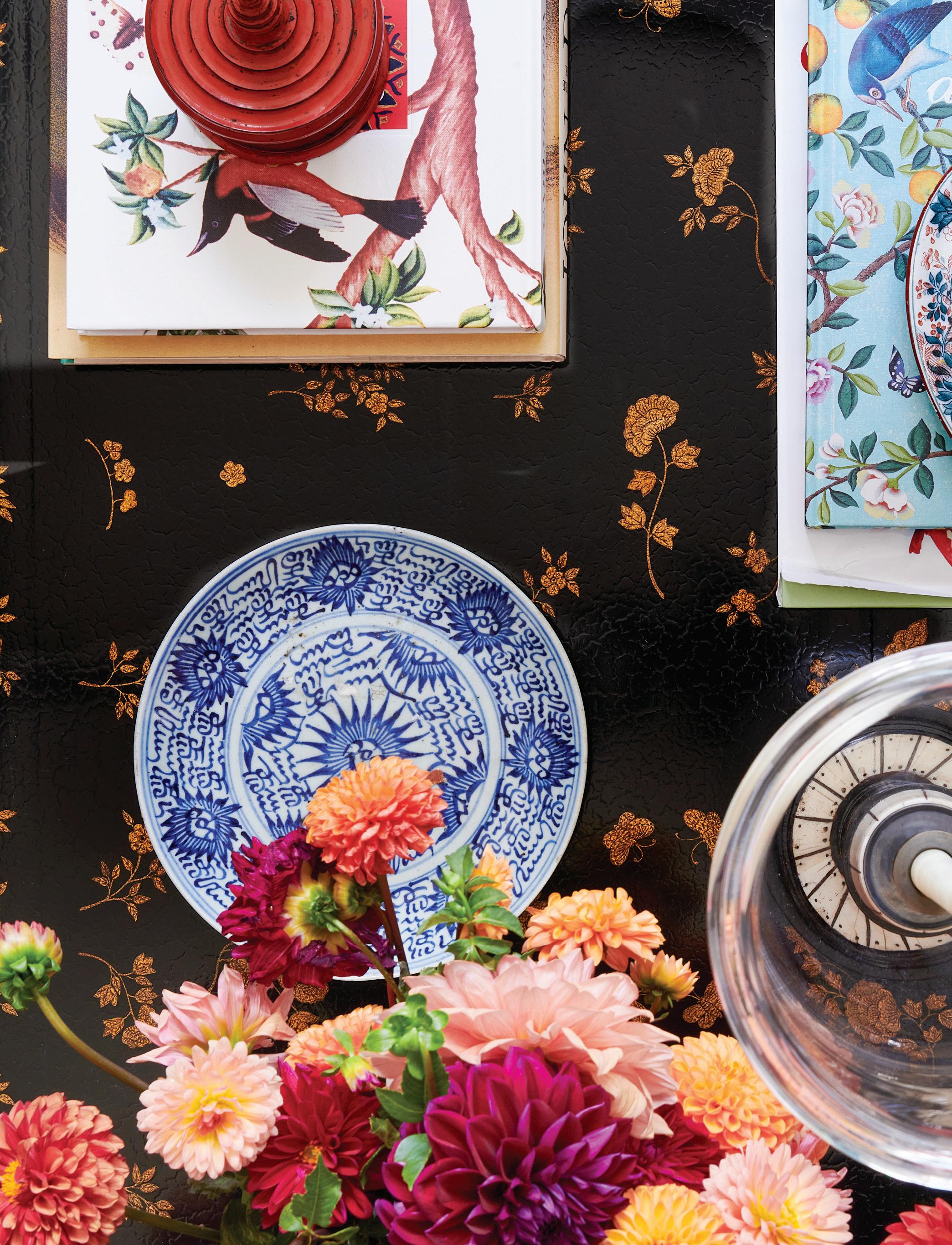
Defining Beauty

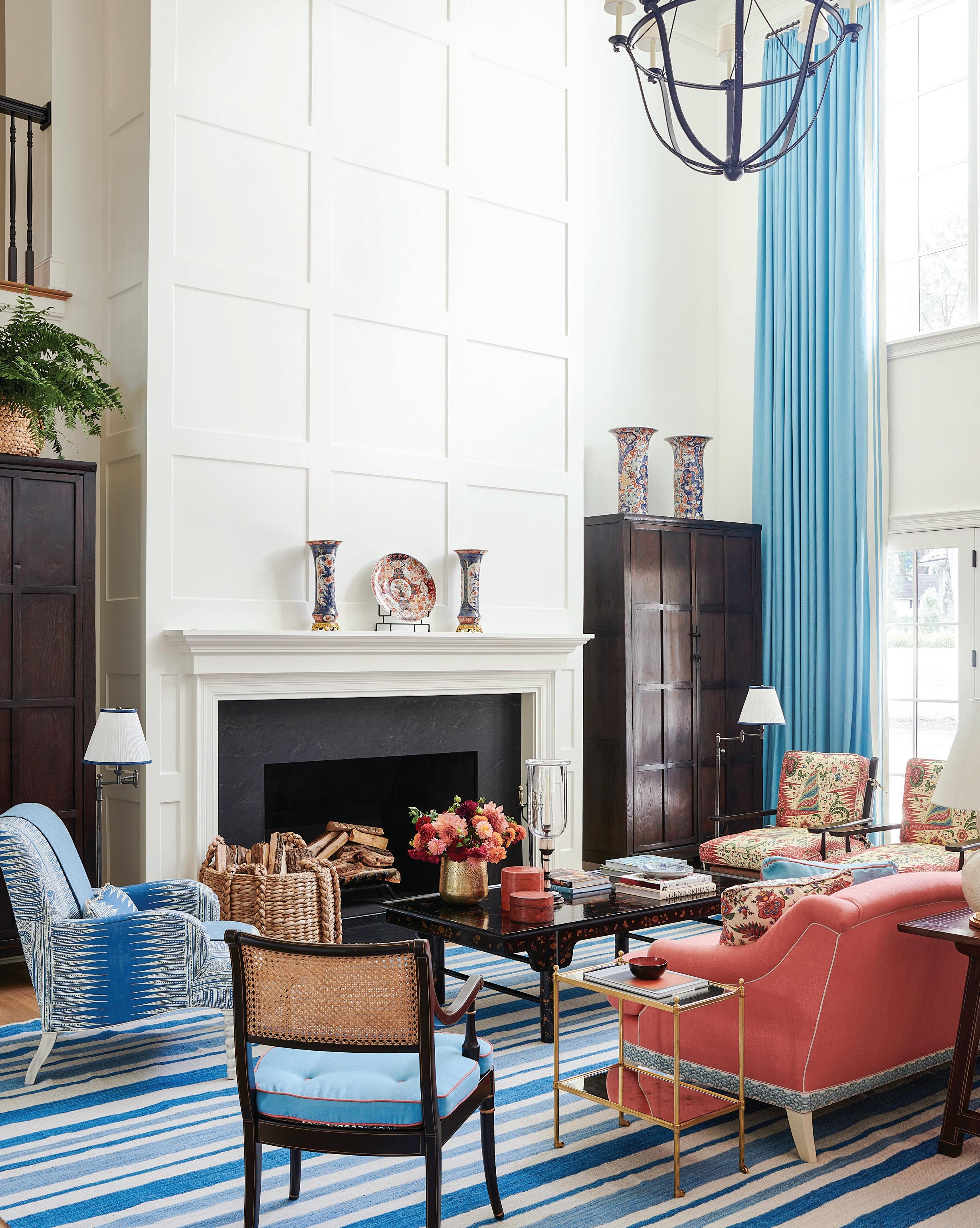
With a third book from Mark D. Sikes out this fall, which includes this flower-filled house in Kansas, we thought it was the perfect time to check in with the Los Angeles-based interior designer to discuss all things beautiful.
BY ALICE WELSH DOYLE PHOTOGRAPHY BY AMY NEUNSINGER
FLOWER: In the opening line of your latest book, Forever Beautiful (Rizzoli, 2024), you begin with “Beauty can change the world. It’s a bold statement, but I believe it.” Tell us about how you discovered beauty growing up in Texas and Central Illinois.
Mark D. Sikes: As a child, I took note of beauty and was highly attuned to the world around me. I found green grass and blue skies mesmerizing and thought butterflies were just remarkable; bees and hummingbirds were fascinating to me as well. I studied the colors of birds’ feathers and the colors of the flowers in my grandmother’s cutting garden. I’m not sure if this makes sense, but I saw deeper into these things—beyond just their existence. I also remember being captivated by the Estée Lauder magazine campaigns that Victor Skrebneski photographed with model Karen Graham—her beautiful gowns, the rooms, the gardens. I was a dreamer and a creative. My grandmother always said to me, “I know you’re going to do something.” I spoke a little differently and articulated things distinctively, and she felt my passion and creativity were unique.
Did you even know that interior design was a career back then?
No, I didn't! I came to interior design through fashion. I worked at Banana Republic when it was an emerging American classic brand, which was in line with my personal aesthetic. There I cultivated my creative skills while working in visual merchandising, marketing, and styling. What I did in those roles was very similar to designing a home—you’re looking at light and dark, soft and hard, while balancing colors, prints, and solids. I was always drawn to interiors, and I was an encyclopedia when it came to iconic interiors of the past. The other thing I learned at BR was the operational side of creativity—the details behind the beauty and how to execute it working with teams of people. I also learned storytelling, which applies to what I am doing today. Every house has its own story.
So you took what you learned at Banana Republic to create your own brand of beauty, and now you’re debuting your third book on the topic. Has your definition of what’s beautiful changed over the years?
I think the things I like today are no different than they were years ago, but of course my aesthetic has evolved and I’ve learned a lot. I’ve also been exposed to much more, especially through travel. All that exposure, though, has not fundamentally changed what I think is beautiful like the color blue and blue-and-white stripes, for example. The essence of who my firm is remains the same since the first book, Beautiful. We’ve been able to share a story and point of view. It’s so natural and authentic to talk about the things you truly love.
Your definition of beauty is the same, but how is Forever Beautiful different from the first two books? This book really hones in on the power of nature in shaping the
interiors of a home and how it inspires each of the 12 chapters in this book, which is laid out by the months of the year. The homes capture our range, but each tells a story that reflects its location. It’s a celebration of nature.
How do flowers inform your work?
I love flowers and floral patterns, and I’m drawn to the prints from Colefax & Fowler in particular—ones we’ve been looking at forever but perhaps take a bit for granted. Floral prints inform the palette of a room, for sure, but the type of fabric can also add a particular atmosphere. If it’s a chintz, it can read more British; linen more casual; silk more formal. Florals symbolize life, growth, and natural beauty. Plus, they make people happy, and we need that feeling more than ever!
Talk about the importance of details in your work, which you illustrate in the “photo album” approach at the end of each chapter.
I always tell my team that a room needs to unfold over time. Our job is to make the whole picture very serene and beautiful and to tell a story about the person who lives there. As you spend more time in the home, you will start to see more details reveal themselves—but you shouldn’t notice them all right away. You first want to take in the overall atmosphere. We curate every last detail from the way we apply fabric and trim to a piece of furniture to our mix of old and new and patterns and prints. I believe the most magical detail is light, and it’s different in every home—how light enters a room in the morning and how it ends the day. And light is what highlights those other details, of course.
Anything you’ve found beautiful in the last few years that perhaps surprised you?
Ever since the height of Covid, I’ve really appreciated the beauty of walks and taking time to get out in nature. We’ve become so programmed to look down at our phones, but there is so much magic when we look up. You see things a little bit differently. Also, I went to Africa four years ago, and it was an eye-opening experience for me—the realization about the circle of life and how animals respond to each other and need each other. We are not completely in control; we are just part of it all. That mindset brings peace and serenity. It’s a more spiritual way of thinking, but that’s what I am finding beautiful these days.
What can we expect from you going forward when it comes to books?
Forever Beautiful is the end of the “beautiful” trilogy, and we are offering a limited edition gift-boxed set of all three books. I’m not sure the exact direction going forward, but I’ll move into a different realm. I think my next book will be less about big projects and more about visual themes and where I am creatively. I’ll continue showing our work in books because I like playing a part in how it’s presented—picking the images, the font, and the story, which is itself a beautiful thing!
PREVIOUS PAGES: The beauty of nature inspired the interiors of this newly built house in Mission Hills, Kansas, but, “It came in the form of an unlikely source: a collection of centuries-old Imari porcelain,” says designer Mark D. Sikes. The ceramics, embellished with flowers, birds, fish, and mythological creatures, drove his color choices throughout the house. “Imari is almost always done in cobalts, irons, reds, and gleaming golds—a fun and unfussy color palette that perfectly suits this wonderful family,” he says. Layered patterns and colors tell a story, even on a tabletop. THESE PAGES, RIGHT: The porcelain also became the muse for the custom, hand-painted de Gournay wallpaper in the dining room. As the family loves to entertain, Mark designed the space with two tables that can be pushed together with leaves.


“I’ve never heard anyone say they don’t like blue. Men and women are equally drawn to it, and it’s a great complementary color that plays well with others.” — MARK D. SIKES

“It makes it instantly transportive,” he says.
“The
ABOVE: Pattern-on-pattern is very much at play in the powder
where the designer used several wallpapers by Iksel layered with arrangements of actual Imari plates. “It’s an idea we had later in the design process that has had so much creative and innovative impact,” says Mark.
LEFT: Mark tented the guest room in Quadrille’s ‘Arbre de Matisse’ fabric in China Blue.
wall mirror has a Moorish silhouette that speaks of faraway lands.”
room,

Tongue-and-groove paneling and a coffered ceiling were added to the media room to supply needed architectural details. “The custom art pieces and corner banquette are drawn from the Imari color palette so they’re in unison with the rest of the home, albeit in more modern silhouettes,” says Mark.
People, Places, and Things: What Mark Finds Beautiful

HOTEL
Hotel Du Cap in Antibes in the South of France is a favorite of mine. The setting is so beautiful, and there’s a feeling that’s hard to pinpoint. The interiors are super elegant but simple, and the walk down to the beach club is incredible.
CITY
I’m really loving Washington, D.C., a lot right now. It is such a beautiful representation of America. The way it’s laid out is remarkably beautiful with vistas, trees, and historic buildings. It’s a city that has great energy.
HISTORIC HOUSE
Villa La Fiorentina, a Palladianstyle villa in the South of France, is a source of inspiration for me. At one point it was decorated by Billy Baldwin, and he used a lot of blue and white in his redesign.
FLOWER
Lily of the valley has my heart these days. It signifies the first










































signs of spring; it looks super delicate, but it’s also hardy and strong.
SHADES OF BLUE
Several Farrow & Ball blues currently in my repertoire include Skylight, Borrowed Light, Cook’s Blue, Lulworth Blue, and Parma Gray.
ART
I appreciate the color combinations and movement of Cy Twombly’s paintings. I also love the work of Agnes Martin with her graphic and linear shadows and stripes, and I like to balance her pieces with a traditional room. Lately when I go in antiques stores, I’m very drawn to still lifes of floral and citrus.
ANTIQUES
I prefer English antiques like Chippendale and Georgian styles because of their simplicity. It’s about the stain, the finish, and the functionality instead of ornateness. We’re




















building a very Georgian country house in Ojai and that’s where my mind is at the moment.
STYLE ICON
Jackie Kennedy, of course! I find her appealing in so many ways beyond just the way she


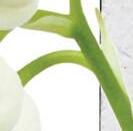







Forever Beautiful (Rizzoli, 2024) is the latest release from designer Mark D. Sikes. Each of the twelve projects featured showcases his signature style and skillful hand at creating interiors inspired by nature.







dressed. I loved her dedication to art and the history of design, which she brought to The White House. And she had a classic sensibility that reflected her time but was never trendy.




Cultivating Grace

At Grace Rose Farm in Southern California, Gracie and Ryan Poulson combine their artistic passion for beauty with a strategist’s foresight to create a community that functions as both a business and an abiding source of joy.
BY FRANCIE MACDOUGALL PHOTOGRAPHY BY MARCY SIMPSON
BY
PHOTO
GEORGIANNA LANE

As a child, Gracie Poulson discovered that “growing and clipping roses for others was my love language,” she writes in her book Garden Roses (Artisan, 2024). Now, she and husband Ryan have channeled her early enthusiasm into Grace Rose Farm in Southern California, where they share their cut stems and plants with flower aficionados around the country.
When Gracie Poulson planted a rose bush at the first house she and her husband Ryan lived in as newlyweds almost a decade ago, it was an act of nostalgia. Gracie had loved roses since her childhood days of visiting her grandmother’s home, where she was mesmerized by the lush garden, beautiful floral arrangements, and collections of rose-decorated objects throughout. That fondness only continued to grow as Gracie discovered more rose varieties, as well as the power she had to cultivate flowers that revealed their best selves. When her own garden blossomed to over 500 plants, she began sharing photos on Instagram, and before long, floral designers came calling. Gracie and Ryan quickly realized they needed not only more land and more roses but also a business plan.
At the time, Ryan was working in the music industry, but they both knew they were on to something big. To find their professional footing, the couple “pivoted a lot,” as Gracie remembers, to handle a geographical move from Northern California to the Santa Ynez Valley. They purchased a 10-acre equestrian farm in order to build what started as a hobby into a thriving business. Now, a few years, an additional 40 acres, and 25,000 rose bushes later, the business bustles, and life on the farm is essentially a round-the-clock job. But true to the beginning of this journey, it’s still about the love for roses. “I’ve always believed they’re the grande dames of the garden,” Gracie says, which explains why in contrast to other flower farms that diversify what they grow to appeal to the widest clientele, the Poulsons opt to remain singularly focused. “We’re both creative, although Ryan handles operations while I focus on marketing and checking in on everything,” she adds. It’s a partnership that clearly flourishes both at work and at home. “We’ve figured out over time that it’s best to stay in our lanes,” laughs Gracie. These days, there is a seemingly endless array of varieties to tend and manage. To keep things consistent, Gracie trains each of the gardeners on her team according to her own methods of
propagation. The resulting abundance of cut-flower bouquets and rose bushes that are shipped daily around the country are testaments to the success of her process. However, Grace Rose Farm’s greatest resource is also its greatest challenge: Mother Nature. The farm has weathered heat waves, freezes, fires, and windstorms that occasionally interrupt their farm-to-garden chain. But the Poulsons’ dedication ensures they keep moving forward. “I know so many people who find joy in the digging and labor of gardening, but my joy really comes from the outcome,” says Gracie. "I want a beautiful garden, and each blossom is a reward.”
Although not a trained floral designer herself, Gracie says one of her greatest pleasures is creating arrangements to enjoy at home when the family gathers to unwind after a long day at the farm. Her go-to method is simply to gather the blossoms and place them in a clear vase to let them shine on their own without the distraction of other flowers or greenery. “Roses are so beautiful by themselves, so they don’t need a lot,” she says. “They’re elegant no matter how you display them.”

Gracie’s unwavering passion and down-toearth philosophy can be found on every page of her new book, Garden Roses (Artisan, 2024). Eyecatching photography and lyrical text about each variety’s history, scent, and even personality accompanies brass tacks information about zones and breeders, petal count, bloom form, and more. It’s a serious resource book but also a dreamy, armchair read. “You can find statistics online, and we have that in the book,” Gracie says. “But I also wanted to talk about the actual experience of our growing and how tending roses has enriched our lives.”
Ultimately, the success of the Poulsons’ endeavors may be best reflected in the perspective of their three-year-old daughter, Seraphina. Although yet too young to wield shears and pruners or distinguish between a hybrid tea and a floribunda, “she’s a real farm girl,” says Gracie. “They’re all just pretty flowers to her. She doesn't know any different.”
ABOVE: Buddy, one of the family’s four Great Pyrenees (a herding breed known for having a keen sense of smell), can always sniff out a rose that needs closer inspection. OPPOSITE PAGE: Rows of All Dressed Up roses reach for the morning sun.

“I’ve always believed roses are the grande dames of the garden.”
—GRACIE POULSON


Rose Champions
Although Gracie compares picking a favorite rose to choosing a favorite child, she shares a few she recommends for their specific attributes.
Best in Arrangements
Ashley, Pink O’Hara, and Alabaster. The bright pink, light pink, and white reflect a color combination I love.
Most Dependable
Eustacia Vye. This David Austin rose has a really beautiful ombré pink, old-fashioned bloom.
For Gracious Gifting
You can’t go wrong with any kind of white rose, whether for a man or a woman. My go-to is White O’Hara. It’s beautiful and fragrant, and we sell both bouquets and bushes.
To Stop and Smell
Princess Charlene de Monaco. Its fragrance is intoxicatingly sweet.
For the Novice Francis Meilland. It repeats several times throughout the season and rewards its growers with large blooms.
What I Grow at Home
Pope John Paul, Bolero, and All Dressed Up. They never fail to put on quite a show.






OPPOSITE PAGE, LEFT TO RIGHT: Roses are harvested seven days a week for nine months of the year, and tending the farm is a family affair. Gracie can often be found cutting in the early morning when the stems have the most moisture and are at their hardiest. • Like her mother, Seraphina is developing a fondness for flowers at a young age and is eager to lend her father a helping hand.
Francis Meilland
Eustacia Vye
Ashley White O’Hara
Princess Charlene de Monaco Bolero

Passion Project

On a mission to foster a more environmentally-friendly floral industry, TJ McGrath gathers like-minded creatives for a symposium called the Sustainable Flowers Project.
BY LYDIA SOMERVILLE PHOTOGRAPHY BY LUCY HUNTER

PREVIOUS PAGES, LEFT TO RIGHT: TJ McGrath created his “Less is More” bowl featuring zinnias and cosmos. • Buckets of zinnias, marigolds, cosmos, dahlias, garden roses, and foraged grasses await attendees of the floral workshop. THESE PAGES, ABOVE: TJ McGrath at work. OPPOSITE, CLOCKWISE FROM TOP LEFT: Floral experts Shane Connolly, Ariella Chezar, Lucy Hunter, and Becky Feasby
TJMcGrath
is passionate about promoting better methods in flower cultivation, a movement known as sustainable floristry. On a plot of land in central New Jersey, the floral designer grows flowers in beds filled with custom-blended soil tailored to each species. Created by soil scientist Eric Fleisher, each mixture is designed to nourish a specific type of flower. And because no chemicals touch TJ’s plantings, the blooms can be enjoyed in an arrangement and then sent straight to a dedicated compost pile of all-organic matter, unsullied by dangerous products. It’s a regenerative soil cycle that never ends.
TJ’s plot of land sits on a property called Jardin de Buis that includes 26 acres and a house owned by Eric Fleisher and his wife, architect Andrea Filippone. Andrea originally bought the old dairy farm in the 1990s and built a house by incorporating the four barns that stood on the property into one large structure. Since then, the couple’s stewardship of the land has resulted in a magical place where paths lead visitors on a journey of discovery from one charming scene to another.
Last year, Jardin de Buis was the site of the Sustainable Flowers Project, a three-day symposium on best practices in floral cultivation. Organized by TJ and Canadian floral designer Becky Feasby, the event drew more than 40 flower lovers for demonstrations and hands-on floral design workshops. And as often happens, attendees unified by their common interest— in this case, floral design—became fast friends, inspiring one another with their imaginations and artistic talents.
Along with TJ and Becky, the panel of floral design experts included Ariella Chezar of Massachusetts, Shane Connolly of London, and Lucy Hunter of Wales. “At the beginning of the workshop, each designer shared a hands-on demonstration,” says TJ. “Shane created a foam-free casket spray; Ariella designed a seasonal bridal bouquet; Lucy constructed a statement urn; and I demoed a locally grown bowl, sort of a minimalist arrangement.” He explains that students then had the opportunity to choose which of these designs they wanted to make during the weekend. “We also split the students into four groups and executed foam-free reception flowers inspired by our surroundings,” adds TJ. “The dinner tables for the last evening were decorated with their creations.”
TJ drew upon his sustainability mindset for every aspect of the weekend. “Demand for flowers increases every year, but there are consequences with the chemicals many growers use and in the effect that shipping flowers around the world has on our carbon footprint,” he says. “My hope is to help continue building more of a global community that is invested in environmentally-friendly practices in the floral industry,” he says, adding that waste is also a problem. “Just take a look in the dumpster outside the venue after any wedding.”
While there’s no question TJ strongly believes the beauty that flowers bring to our lives is important, whether for special events or in everyday moments, he’ll also continue to be a man on an ecological mission—one that will last long after the blooms have faded.
“My hope is to help continue building more of a global community that is invested in environmentallyfriendly practices in the floral industry.”
—TJ MCGRATH


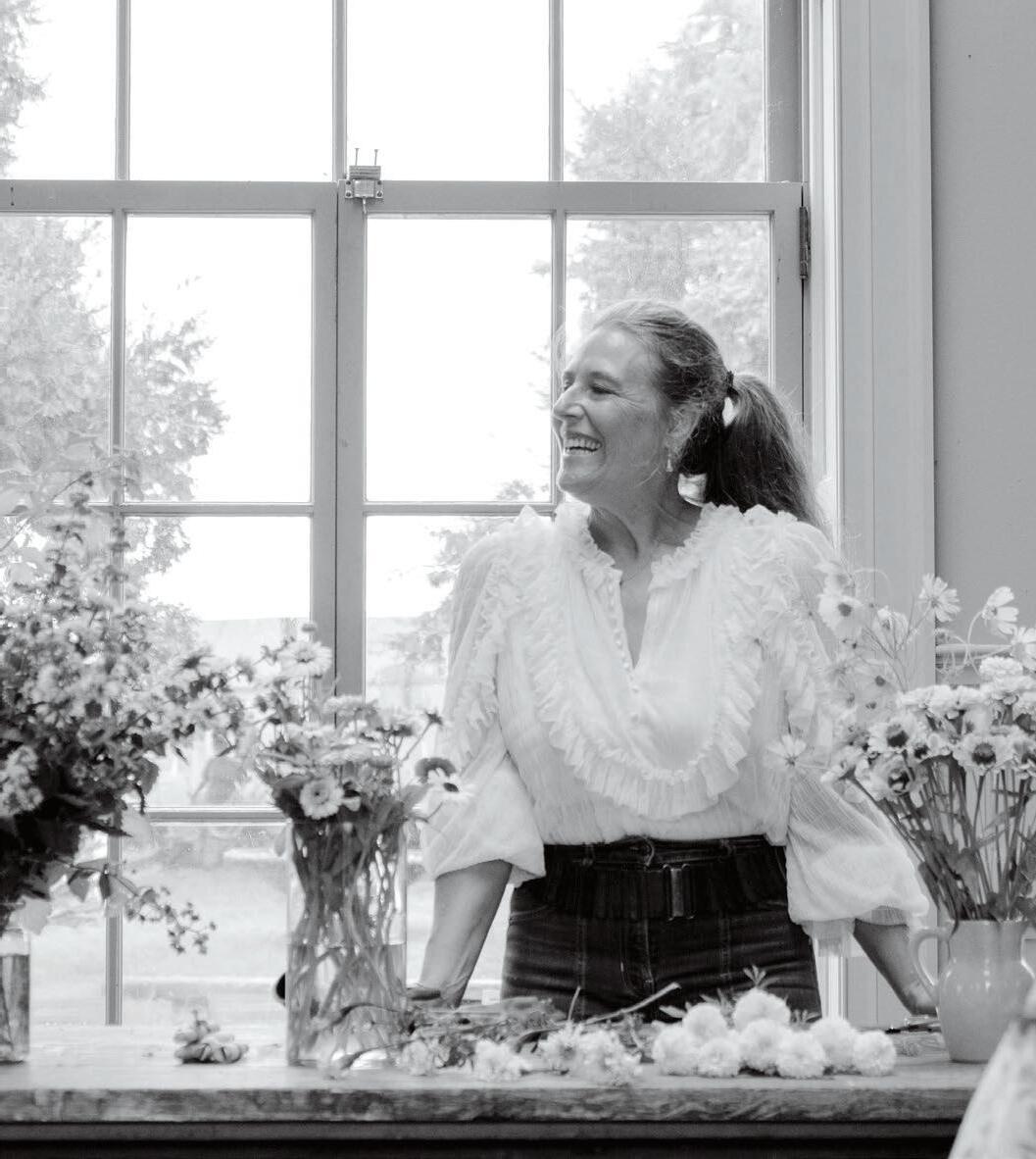


Clean Up Your Floral Game
TJ McGrath offers tips on where to start in your own sustainable flower journey.
Test your soil. All 50 states have agricultural extension offices where you can procure a soil test kit. You then send a sample to a soil lab, usually at a university. The lab will give you an analysis of the pH level of your soil and can suggest effective ways to amend your soil without chemicals.
Use smaller containers for arrangements.
The more stems you have in a smaller container, the more stable the arrangement will be—and the longer it will last.
Opt for pin frogs or chicken wire over floral foam. Floral foam contains carcinogens and is a single-use plastic.
Spray weeds with vinegar, or pull them by hand. I feel like I’ve had a good day when I’ve pulled three bags of weeds. On days when it’s too hot to work outside, I opt for spraying the weeds with vinegar.
Plant a perennial cutting garden. It’s an easy way to start a sustainable flower garden.

OPPOSITE: Floral designer Lucy Hunter composed the statement urn of roses and locally-sourced materials like amaranths, nicotiana, smoke bush, and scabies. ABOVE: The symposium culminated in a festive dinner for the attendees, surrounded by their glorious creations.

SOURCES
Who Did It & Where To Get It

Room: Vaughan, vaughandesigns. com; Living Room Rug: Interior Resources, intredallas.com; Custom Paint Color for Dining Room Ceiling: finepaintsofeurope. com; Dining Room Chandelier: David Iatesta, Iatesta Studio, iatestastudio.com; Powder Room Tile: Waterworks Masterpiece, Waterworks.com; Beadboard Ceiling Color in Breakfast Room: SW 9641 Dew Drop, sherwinwilliams.com
WOMEN IN THE GARDEN
PAGES 52-55: Gloria Vanderbilt, gloria-vanderbilt.com
A WALK ON THE WILD SIDE
PAGES 60-65: Landscape Designer: Larry Weaner, Larry Weaner Landscape Associates, lwladesign.com
DEFINING BEAUTY
PAGES 66-73: Interior Designer: Mark D. Sikes, markdsikes.com
CULTIVATING GRACE
PAGES 74-79: Grace Rose Farm, gracerosefarm.com
PASSION PROJECT
PAGES 80-85: Floral Designer: TJ McGrath, TJ McGrath Design, tjmcgrathdesign.com; Garden Designer: Lucy Hunter, Lucy Hunter, lucyhunter.co.uk; Floral Designer: Becky Feasby, Prairie Girl Flowers, prairiegirlflowers. com; Floral Designer: Ariella Chezar Design, ariellaflowers.com; Floral Designer: Shane Connolly, Shane Connolly & Company, shaneconnolly.co.uk; Jardin de Buis, Andrea Filippone, AJF Design, ajfdesign.com
magazine, ISSN 1941-4714, is a bimonthly publication of Peony Publishing, LLC, located at 3020 Pump House Road, Birmingham, AL 35243. Periodicals postage is paid at Birmingham, AL, and additional mailing o ces. Postmaster: Send address changes to magazine, P.O. Box 8538, Big Sandy, TX 75755. For subscription inquiries and customer service, please call 877.400.3074. All unsolicited materials will not be returned. Printed in the U.S.A. , 205.799.2991; , samuelandsons.com









presenting sponsor
M c CORQUODALE TRANSFER

Thursday, October 3
GALA IN THE GARDENS
Sponsored by Jones Walker LLP & ServisFirst Bank




design sponsor LEE JOFA benefiting FRIENDS OF BIRMINGHAM BOTANICAL GARDENS
@antiquesgardensbham BBGARDENS.ORG/ANTIQUES
Friday, October 4
SHOP THE SHOW
Stacey Bewkes, Founder of Quintessence
Sponsored by Jeremy D. Clark
RED DIAMOND LECTURE SERIES
Hosted by Richard Keith Langham
Sponsored by Red Diamond Coffee & Tea.
Life in the Garden Building a Home to Last Bunny Williams Gil Schafer
Saturday, October 5
FUTURE OF TRADITIONAL DESIGN
Elizabeth Lawrence, Rudy Saunders, Elizabeth Pyne Singer
Moderated by Steele Marcoux, Editor in Chief, VERANDA
Sponsored by Cobbs Allen & PURE Insurance
INFLUENCE AND INSPIRATION
Barry Dixon, Mary McDonald, Michelle Nussbaumer
Moderated by Margot Shaw, Editor in Chief, FLOWER
Sponsored by FLOWER
FLORAL WORKSHOP
Calvert Crary, Executive Director of Flower School New York and Flower School Los Angeles
Sponsored by Anna & Jim Cooper
Sunday, October 6
DESIGN, STYLE, AND INFLUENCE
Alexa Hampton
Sponsored by Visual Comfort & Co.
DESIGNING A HOME TOGETHER
James F. Carter, Richard Keith Langham, Ben Page
Moderated by Michael Diaz Griffith, Executive Director & CEO Design Leadership Network
Sponsored by Paige Albright Orientals and Southern Home Magazine














OCTOBER 9 - NOVEMBER 2, 2024 Step into Charleston’s living history
Delve into Charleston’s unique cultural heritage and architectural legacy during the Preservation Society of Charleston’s 48th annual Fall Tours. Learn about our city’s streetscapes through specialized morning Walking Tours or enjoy a leisurely afternoon House and Garden Tour to explore a new neighborhood each weekend. Our expert-guided Insider’s Tours, focused on history, architecture, or gardens, offer even deeper exploration of some of the city’s finest private properties. Join us for the Fall Tours this year to celebrate Charleston’s connections between past and present.














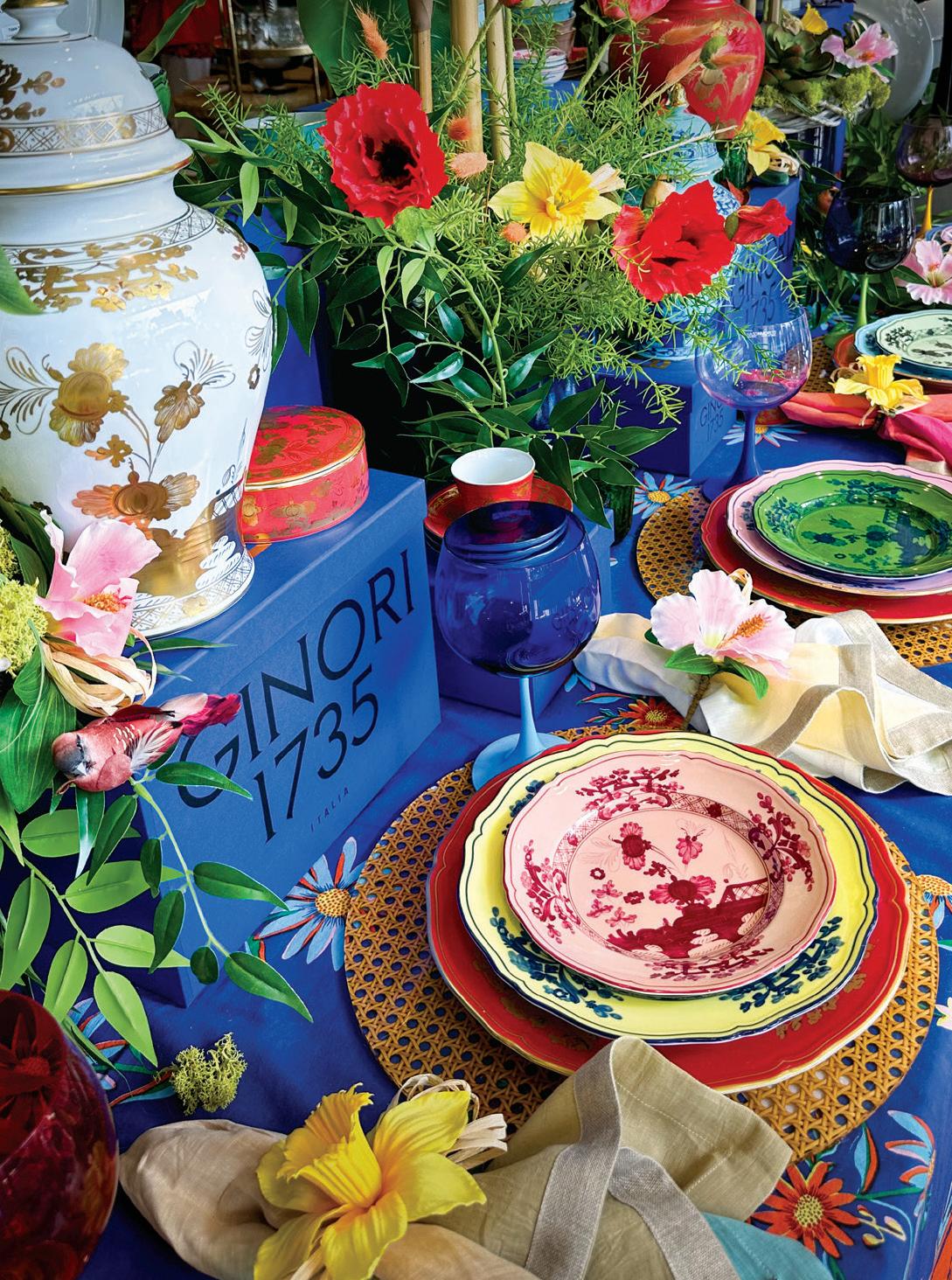





























































FLORAL MOMENT

“I’m so glad I live in a world where there are Octobers.”
— L. M. MONTGOMERY, AUTHOR OF ANNE OF GREEN GABLES
BY
PHOTO
SUSANNA BLAVARG VIA GETTY IMAGES





